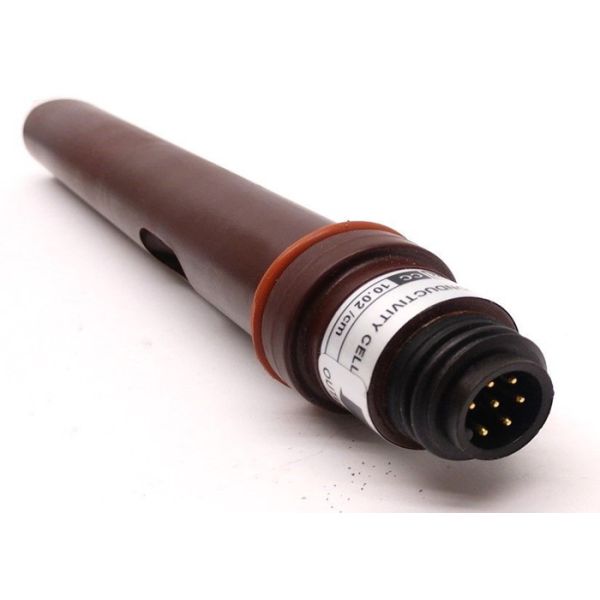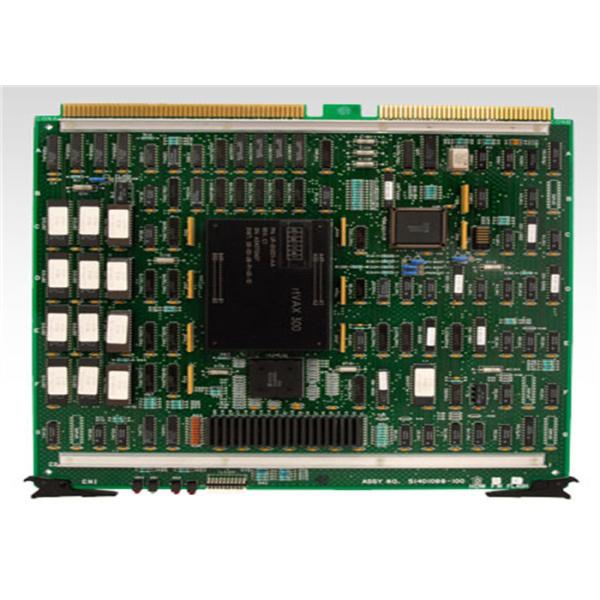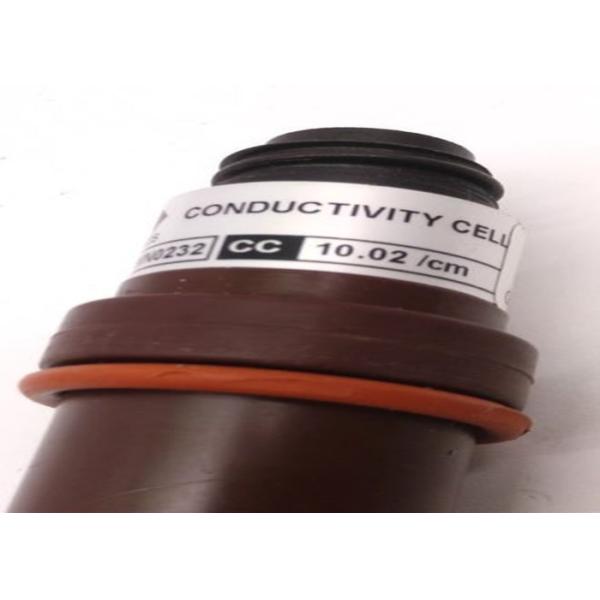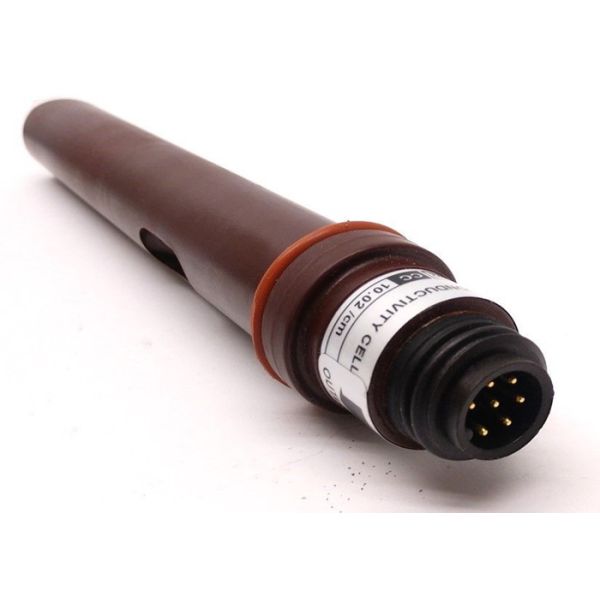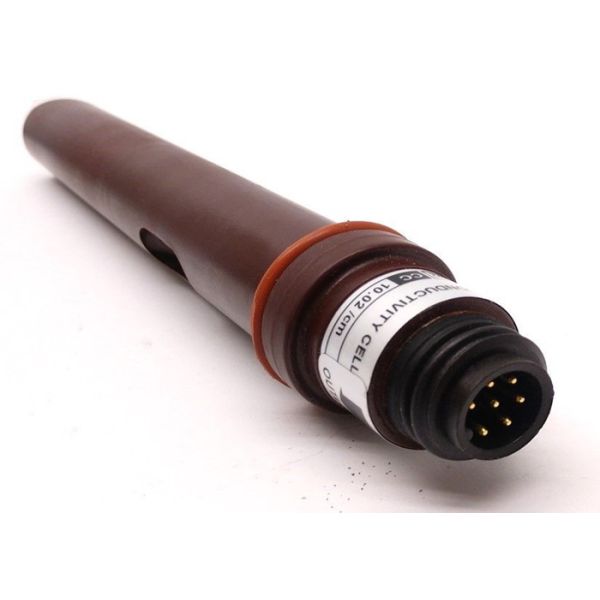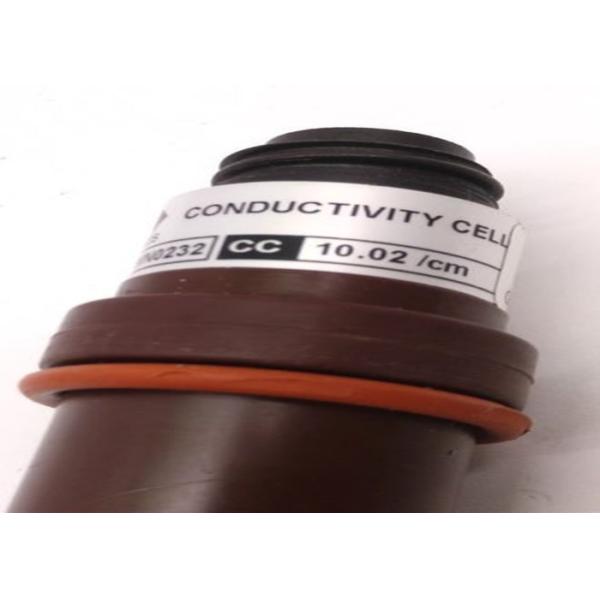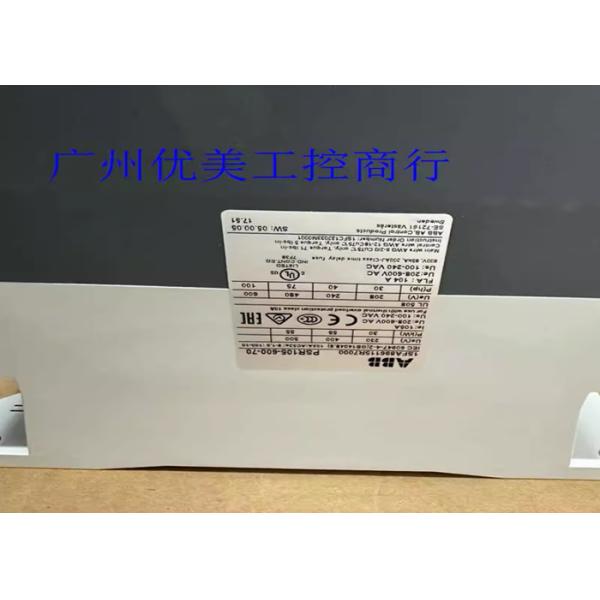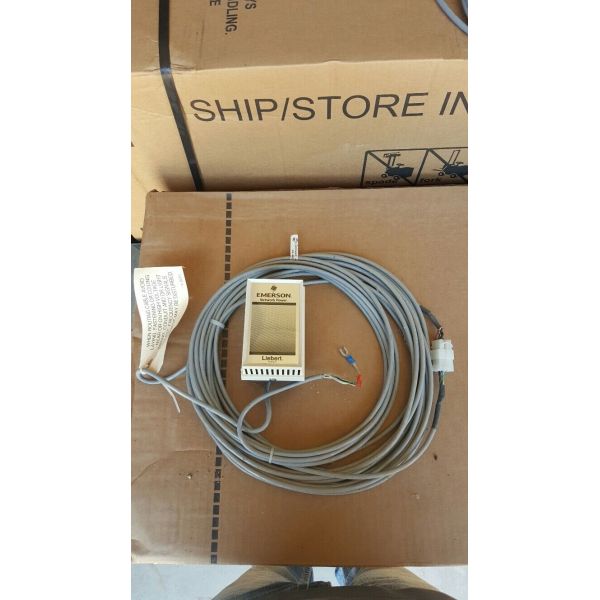Product Description:DS3800HDRA
- Board Layout and Components: The DS3800HDRA is built with a layout that is optimized for its function as a line driver/receiver. It is populated with a carefully selected array of electronic components that work together to perform signal processing and amplification. High-quality transistors, resistors, capacitors, and integrated circuits are likely used to ensure reliable performance. These components are strategically placed on the board to minimize signal interference and maintain proper electrical characteristics. The two 40-pin connectors are prominent features on the board's physical design. These connectors are robustly engineered with precisely defined pin configurations to enable secure and reliable connections with other boards, modules, or devices within the industrial control system. The pins on these connectors are designed to handle different types of electrical signals, such as digital or analog signals, depending on the specific communication needs of the system.
- Jumper Configuration: The presence of two jumpers on the board provides a level of flexibility and customization. These jumpers allow users to configure certain aspects of the board's operation according to the specific requirements of the industrial application. By changing the jumper settings, operators can modify parameters like signal amplification levels, impedance matching, or communication mode settings. This enables the DS3800HDRA to adapt to different types of connected devices or to optimize performance based on the specific electrical characteristics and distances involved in the communication paths within the system.
- Size and Form Factor: While exact dimensions may vary depending on the specific design, the DS3800HDRA is typically sized to fit neatly within the standard enclosures and racks used for housing Mark IV control system components. Its form factor is designed to facilitate easy installation and integration alongside other related boards and modules. This ensures that it can be incorporated into the control system without taking up excessive space or causing difficulties during the assembly and maintenance processes. The board's physical design also takes into account factors like heat dissipation and electromagnetic compatibility to ensure stable operation in the often electrically noisy and space-constrained environments of industrial facilities.
- Signal Conversion and Amplification: One of the primary functions of the DS3800HDRA is to convert and amplify electrical signals. In industrial control systems, signals from sensors, actuators, or other control boards may need to travel significant distances to reach their destinations. Over these long distances, signals can degrade due to factors like electrical resistance in cables, electromagnetic interference, and attenuation. The DS3800HDRA addresses these issues by taking in the input signals, which could be in various formats such as TTL (Transistor-Transistor Logic) levels for digital signals or low-level analog signals, and then converting and amplifying them to appropriate levels for long-distance transmission. For example, it can boost the voltage and current of digital signals to ensure that they remain distinguishable and error-free even after traveling through lengthy cables, while for analog signals, it can adjust the amplitude and impedance to maintain signal integrity and accuracy. This signal conditioning is crucial for maintaining reliable communication between different components of the industrial control system, such as between a central control unit and remote sensors or actuators located in different areas of a large factory or power plant.
- Long-Distance Communication Support: The board is specifically engineered to enable data communication over long distances. By effectively amplifying and conditioning the signals, it allows for the transfer of information between different parts of the industrial system that may be physically separated by hundreds or even thousands of feet. This capability is vital in applications like in large manufacturing plants where sensors located at the far ends of production lines need to send data back to a central monitoring and control station, or in power generation facilities where signals from turbine sensors have to reach the control room across a considerable distance. The DS3800HDRA minimizes signal degradation and noise interference during this long-distance transmission, ensuring that the received signals at the destination are accurate and can be used for proper decision-making and control actions.
- Compatibility and Integration: With its two 40-pin connectors, the DS3800HDRA offers excellent compatibility and integration capabilities within the Mark IV control system and potentially with other related industrial systems. It can interface with a wide variety of other boards, I/O (input/output) modules, sensors, and actuators that have corresponding compatible connectors or communication interfaces. This enables it to be a seamless part of the overall control system architecture, facilitating the flow of data between different subsystems. For example, it can connect with a sensor board that measures temperature and pressure in a chemical reactor and then transmit those signals to a control board that adjusts the operation of the reactor based on the received data. The standardized pin configurations of the connectors also simplify the installation and wiring process, reducing the potential for errors and making it easier for technicians to set up and maintain the system.
- High-Quality Components: The use of high-quality components in the construction of the DS3800HDRA contributes to its excellent performance and reliability. These components are selected for their ability to withstand the harsh conditions often found in industrial environments, including temperature variations, humidity, vibrations, and electrical noise. For instance, the transistors used for signal amplification are chosen for their high gain and stability over a wide range of operating conditions. The capacitors and resistors are designed to maintain consistent electrical properties, helping to filter out noise and ensure stable signal levels. This reliance on quality components ensures that the board can operate continuously and accurately for extended periods without frequent failures or performance degradation.
- Noise and Interference Mitigation: The design of the DS3800HDRA incorporates several features to mitigate the effects of electrical noise and interference. Shielding techniques are likely employed to protect the internal circuits from external electromagnetic fields that could corrupt the signals. Additionally, the signal processing algorithms and component layout are optimized to minimize the introduction of internal noise. For example, proper grounding and isolation measures are taken to prevent electrical noise from coupling into the signal paths. By reducing noise and interference, the board can maintain the integrity of the transmitted and received signals, which is crucial for the accurate operation of the industrial control system and for avoiding false readings or incorrect control actions.
Features:DS3800HDRA
- Signal Conversion: The DS3800HDRA is capable of handling a variety of input signal types, including both digital and analog signals. It can convert these signals into formats that are suitable for long-distance transmission. For digital signals, it might adjust the voltage levels and waveform characteristics to comply with the requirements of the transmission medium and the receiving end. For analog signals, it can perform operations like impedance matching and amplification to ensure that the signal maintains its integrity and can be accurately received over extended distances. This ability to work with different signal types and condition them appropriately is crucial for integrating diverse sensors, actuators, and other control components within an industrial control system.
- Amplification for Long-Distance Transmission: One of the standout features is its signal amplification capability. It can boost the strength of electrical signals to overcome the attenuation that occurs during long-distance travel. In industrial settings where sensors may be located far away from the control center or where signals need to traverse large factory floors or across different sections of a power plant, this amplification is essential. By increasing the voltage and current of the signals as needed, the DS3800HDRA ensures that the information arrives at its destination clearly and without significant degradation, enabling reliable communication between distant components. For example, it can amplify a weak sensor signal from a temperature sensor located at the far end of a production line so that it can be accurately received and processed by a control board in a central monitoring station.
-
- Two 40-Pin Connectors: The presence of two 40-pin connectors on the board provides extensive connectivity options. These connectors are designed with specific pin configurations that allow for seamless integration with a wide range of other components in the industrial control system. They can be used to interface with other control boards, I/O modules, sensors, and actuators. The standardized pin layout simplifies the wiring process and ensures compatibility with other devices that follow the same connection standards within the Mark IV system or related industrial architectures. This enables easy expansion and customization of the control system by allowing for the addition of new components or the replacement of existing ones without major rewiring or compatibility issues.
- Versatile Pin Functions: The pins on the 40-pin connectors can serve multiple functions depending on the specific requirements of the system. They can support various types of electrical signals, such as power supply connections, digital data lines for transmitting and receiving commands and status information, and analog signal lines for interfacing with sensors that measure physical quantities like temperature, pressure, or flow rate. This versatility allows the DS3800HDRA to adapt to different application scenarios and communicate with a diverse array of devices, making it a flexible building block within the industrial control setup.
-
- Customization: The two jumpers on the DS3800HDRA offer a valuable customization feature. Users can configure the board according to specific application needs by changing the jumper settings. These settings can modify aspects such as signal amplification levels, impedance matching parameters, or the selection of different communication modes. For example, if a particular industrial process requires a higher level of signal amplification due to the exceptionally long distance between components, the jumpers can be adjusted to increase the amplification factor. Similarly, in a system where different types of sensors with varying impedance characteristics are used, the jumpers can be set to optimize the impedance matching for better signal transfer. This flexibility allows the board to be fine-tuned for optimal performance in different industrial environments and control system configurations.
-
- Electromagnetic Compatibility (EMC): The DS3800HDRA is designed with good electromagnetic compatibility features. It incorporates shielding and grounding techniques to protect the internal signals from external electromagnetic interference. In industrial settings where numerous electrical devices are operating simultaneously, there is a high potential for electromagnetic fields to disrupt signal transmission. By effectively shielding the board's circuits and providing proper grounding, it minimizes the impact of such interference, ensuring that the signals being transmitted and received remain stable and accurate. This is crucial for maintaining the integrity of the data and preventing errors or malfunctions in the control system.
- Noise Reduction: The board also employs various noise reduction techniques. It includes components and circuit designs that help filter out electrical noise that may be present in the input signals or generated internally. For instance, capacitors and inductors may be used in filtering circuits to remove high-frequency noise spikes or low-frequency hum. By reducing noise, the DS3800HDRA improves the signal-to-noise ratio of the transmitted and received signals, enhancing the overall quality of communication between different parts of the industrial control system.
-
- Robust Component Selection: Built with high-quality components, the DS3800HDRA is designed to withstand the rigors of industrial environments. The transistors, resistors, capacitors, and other electronic elements are chosen for their durability and ability to perform reliably under conditions of temperature variations, humidity, mechanical vibrations, and electrical stress. This ensures that the board can operate continuously and without frequent failures, providing a stable and long-term solution for data communication within the industrial control system.
- Reliability in Harsh Conditions: Its design takes into account the challenges posed by harsh industrial conditions. Whether it's in a hot and dusty manufacturing plant, a humid chemical processing facility, or a cold outdoor power generation site, the DS3800HDRA is engineered to maintain its functionality. The components are protected from environmental factors through proper encapsulation and the use of materials that can resist corrosion and degradation. This reliability makes it a dependable choice for critical industrial applications where consistent data communication is essential for the operation and safety of the entire system.
-
- Mark IV System Integration: Specifically designed for GE's Mark IV control systems, the DS3800HDRA seamlessly integrates with other components within this architecture. It adheres to the internal communication standards and interfaces defined by the Mark IV system, allowing it to work in harmony with other control boards, I/O modules, and subsystems. This ensures that it can contribute to the coordinated operation of the entire control system, whether it's for a power generation plant, an industrial manufacturing process, or an oil and gas facility. For example, it can communicate effectively with the turbine control module, generator regulator, and other critical components in a power plant's Mark IV setup to facilitate the transmission of important sensor data and control commands.
- Interoperability with Third-Party Devices: In addition to its integration within the Mark IV system, the DS3800HDRA also demonstrates good interoperability with third-party industrial devices. Thanks to its support for common electrical signal types and its standardized connectors, it can interface with a wide variety of sensors, actuators, and monitoring systems from different manufacturers. This allows for the easy incorporation of specialized or legacy equipment into a modern industrial control system, expanding the functionality and flexibility of the overall setup. For instance, a plant operator can add a new type of high-precision sensor from a different vendor to improve process monitoring, and the DS3800HDRA will be able to handle the communication with it.
Technical Parameters:DS3800HDRA
| Category |
Safety Relays |
| Description |
SIRIUS Safety Relay Basic Unit Advanced Series With Time Delay 0.05-3 S Relay Enabling Circuits 2 NO Instantaneous 2 NO Delayed Us = 24 V DC Spring-type Terminal (push-in) |
| Manufacturer |
SIEMENS |
| Installation altitude at height above sea level maximum |
2000mm |
| Protection class IP of the enclosure |
IP20 |
| Touch protection against electrical shock |
Finger-safe |
| Category acc. to EN ISO 13849-1 |
4 |
| Design of the product |
Relay Enabling Circuits |
| Degree of pollution |
3 |
| Insulation voltage rated value |
Relative Humidity During Operation |
Applications:DS3800HDRA
Customization:DS3800HDRA
- Input/Output Configuration:
- Power Input Adaptation: Depending on the available power source in the industrial facility, the input connections of the DS3800HDRA can be customized. If the plant has a non-standard power supply voltage or current rating, additional power conditioning modules can be added to ensure the device receives the appropriate power. For example, in a small industrial setup powered by a renewable energy source with fluctuating DC voltage levels, a custom DC-DC converter or power regulator can be integrated to match the input requirements of the control board. In an offshore drilling rig with a specific power generation configuration subject to voltage and frequency variations, the power input to the DS3800HDRA can be adjusted to handle these irregularities and provide stable power to the board.
- Output Interface Customization: On the output side, the connections to other components in the industrial control system, such as actuators (valves, variable speed drives, etc.) or other control boards, can be tailored. If the actuators have specific voltage or current requirements different from the default output capabilities of the DS3800HDRA, custom connectors or cabling arrangements can be made. Additionally, if there's a need to interface with additional monitoring or protection devices (like extra temperature sensors or vibration sensors), the output terminals can be modified or expanded to accommodate these connections. In a manufacturing plant where additional vibration sensors are installed on critical machinery for enhanced condition monitoring, the output interface of the DS3800HDRA can be customized to integrate and process the data from these new sensors.
- Add-On Modules:
- Enhanced Monitoring Modules: To improve the diagnostic and monitoring capabilities, extra sensor modules can be added. For example, high-precision temperature sensors can be attached to key components within the industrial system that are not already covered by the standard sensor suite. Vibration sensors can also be integrated to detect any mechanical abnormalities in equipment like turbines, pumps, or motors. In a power plant, additional gas analysis sensors could be added to the DS3800HDRA setup to monitor emissions or combustion quality in real-time. These additional sensor data can then be processed by the DS3800HDRA and used for more comprehensive condition monitoring and early warning of potential failures. The board can be customized with the necessary circuitry and interfaces to accommodate these additional modules and make use of the extra data they provide.
- Communication Expansion Modules: If the industrial system has a legacy or specialized communication infrastructure that the DS3800HDRA needs to interface with, custom communication expansion modules can be added. This could involve integrating modules to support older serial communication protocols that are still in use in some facilities or adding wireless communication capabilities for remote monitoring in hard-to-reach areas of the plant or for integration with mobile maintenance teams. In a large industrial park spread over a wide area, wireless communication modules can be added to the DS3800HDRA to allow operators to remotely monitor the status of different systems and communicate with the board from a central control room or while on-site inspections.
- Enclosure and Protection:
- Harsh Environment Adaptation: In industrial environments that are particularly harsh, such as those with high levels of dust, humidity, extreme temperatures, or chemical exposure, the physical enclosure of the DS3800HDRA can be customized. Special coatings, gaskets, and seals can be added to enhance protection against corrosion, dust ingress, and moisture. For example, in a chemical processing plant where there is a risk of chemical splashes and fumes, the enclosure can be made from materials resistant to chemical corrosion and sealed to prevent any harmful substances from reaching the internal components of the control board. In a desert-based solar thermal power plant where dust storms are common, the enclosure can be designed with enhanced dust-proof features to keep the DS3800HDRA functioning properly.
- Thermal Management Customization: Depending on the ambient temperature conditions of the industrial setting, custom thermal management solutions can be incorporated. In a facility located in a hot climate where the control board might be exposed to high temperatures for extended periods, additional heat sinks, cooling fans, or even liquid cooling systems (if applicable) can be integrated into the enclosure to maintain the device within its optimal operating temperature range. In a cold climate power plant, heating elements or insulation can be added to ensure the DS3800HDRA starts up and operates reliably even in freezing temperatures.
- Compliance Customization:
- Nuclear Power Plant Requirements: In nuclear power plants, which have extremely strict safety and regulatory standards, the DS3800HDRA can be customized to meet these specific demands. This might involve using materials and components that are radiation-hardened, undergoing specialized testing and certification processes to ensure reliability under nuclear conditions, and implementing redundant or fail-safe features to comply with the high safety requirements of the industry. In a nuclear-powered naval vessel, for example, the control board would need to meet stringent safety and performance standards to ensure the safe operation of the ship's systems that rely on the DS3800HDRA for communication and control.
- Aerospace and Aviation Standards: In aerospace applications, there are specific regulations regarding vibration tolerance, electromagnetic compatibility (EMC), and reliability due to the critical nature of aircraft operations. The DS3800HDRA can be customized to meet these requirements. For example, it might need to be modified to have enhanced vibration isolation features and better protection against electromagnetic interference to ensure reliable operation during flight. In an aircraft engine manufacturing process, the control board would need to comply with strict aviation standards for quality and performance to ensure the safety and efficiency of the engines and associated systems that interact with the DS3800HDRA
Support and Services:DS3800HDRA
Our team of technical experts is available 24/7 to provide support and services for our Other product. We offer a wide range of services including:
- Installation and configuration assistance
- Troubleshooting and problem resolution
- Software updates and patches
- Hardware maintenance and repair
- Remote monitoring and management
- Training and education
Our goal is to ensure that our customers have the best possible experience with our product. If you require assistance or have any questions, please do not hesitate to reach out to our technical support team.




